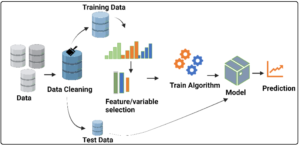
Machine learning could be the key component in developing effective early screening systems identifying frailty in middle aged and older Australians.
With increasing evidence showing physiological decline later in life isn’t an inevitable part of ageing, researchers at Flinders University have assessed whether machine learning models are well suited for predicting pre-frailty as part of health assessments at the earliest indications of onset, when intervention could help delay progression to frailty.
In Australia, between 35% and 45% of people between the ages of 40 and 75 years are pre-frail. As the average lifespan increases and the population ages, the number of Australians at risk of becoming pre-frail or frail also rises, contributing to significant morbidity and mortality, as well as increased health care costs.
This trend is also occurring globally with a recent systematic review showing a high risk of frailty and pre-frailty in adults across 28 countries.

Researchers Dr Shelda Sajeev (Business Information Systems, Artificial Intelligence Research Centre, Torrens University) and Dr Stephanie Champion, led by Professor Sue Gordon, Research Director of ARIIA, from the College of Nursing and Health Sciences at Flinders, undertook a comprehensive analysis of health assessment data for 656 adults in South Australia and evaluated machine learning’s (ML) accuracy in predicting pre-frailty.
ML models, based on data collected using validated frailty assessment tools, were able to identify higher body mass index (BMI), lower muscle mass, poorer grip strength and balance, higher levels of distress, poor quality sleep, shortness of breath and incontinence, as medical issues linked with being classified as prefrail.
“The machine learning analysis identified key health assessment measures that contribute to the shift between not frail and pre-frail, as defined using the Fried Frailty Phenotype and the Clinical Frailty Scale.
“The use of ML has identified different categorisations between not frail and pre-frail participants than statistical analysis which suggest ML approaches can expose more subtle casual issues that could not been identified with standard statistical analysis,” says lead author Dr Shelda Sajeev.

Frailty results from cumulative exposures, with many of the precursors manifesting before middle age.
Experts say there is an opportunity to intervene to reduce adverse outcomes during the pre-frailty period, but early indicators of a transition into frailty are often detected too late.
“Pre-frailty is a transitional period where individuals often do not know they are accumulating deficits, hence the need for screening to identify opportunities to reverse small deficits amenable to change,” says Dr Stephanie Champion.
“It’s important we develop effective systems for identifying pre-frailty because the syndrome is linked with impairments to multiple physiological systems and results in decreased resilience, increased vulnerability to stressors, poorer health outcomes and increased morbidity and mortality.”
 The research article, Machine learning models for identifying pre-frailty in community dwelling older adults (2022) by Shelda Sajeev, Stephanie Champion, Anthony Maeder and Sue Gordon (Flinders University) has been published in BMC Geriatrics (Springer Nature).
The research article, Machine learning models for identifying pre-frailty in community dwelling older adults (2022) by Shelda Sajeev, Stephanie Champion, Anthony Maeder and Sue Gordon (Flinders University) has been published in BMC Geriatrics (Springer Nature).

